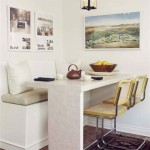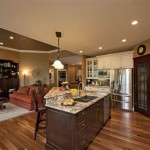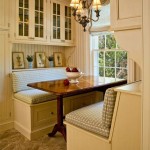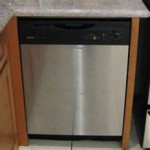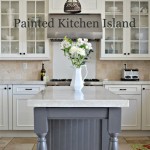Best Woods for Kitchen Cabinets
Choosing the right wood for kitchen cabinets is a crucial decision in any kitchen renovation or build. The wood species impacts not only the aesthetic appeal of the space but also the cabinets' durability and longevity. Understanding the characteristics of different wood types is essential for making an informed choice that aligns with both design preferences and budgetary constraints.
1. Cherry
Cherry is a popular choice for kitchen cabinets due to its rich, warm reddish-brown hue. It's a hardwood known for its strength and durability, offering excellent resistance to dents and scratches. Over time, cherry wood deepens in color, developing a beautiful patina that adds character to the kitchen. This natural aging process makes cherry cabinets a timeless investment. However, cherry is a more expensive option compared to some other wood species. Additionally, it can be susceptible to darkening unevenly when exposed to sunlight, so consistent light management in the kitchen is recommended.
Variations within cherry wood itself can also influence its appearance. Heartwood, the inner part of the tree, exhibits the distinctive reddish-brown color, while sapwood, closer to the bark, appears lighter. Careful selection and matching of boards are important for achieving a consistent look across the cabinetry.
2. Maple
Maple is another hardwood frequently chosen for kitchen cabinets. Its closed-grain structure makes it highly resistant to scratches and dents, making it a practical choice for high-traffic kitchens. Maple is often chosen for its versatility, as it can be stained in a wide range of colors, from light to dark, allowing it to complement various design styles. Natural maple has a creamy white to light reddish-brown color. Its hardness also makes it suitable for painted finishes, providing a smooth and durable surface.
Maple offers several subspecies, each with its own subtle characteristics. Hard maple, for example, is denser and more durable than soft maple. Understanding these variations can help homeowners choose the maple variety best suited to their specific needs and budget.
3. Oak
Oak, a classic choice for cabinetry, is recognized for its prominent grain pattern and robust nature. Available in two primary varieties - red oak and white oak - each offers distinct characteristics. Red oak is known for its reddish undertones and open grain pattern, while white oak features a tighter, closed grain pattern and a lighter, more brownish-grey hue. Both types are strong and durable, capable of withstanding daily wear and tear in a busy kitchen environment.
Oak's open grain pattern can make it susceptible to absorbing stains and moisture, requiring proper sealing and finishing to protect it from damage. White oak is slightly more water-resistant than red oak due to its closed-grain structure. Consequently, white oak is often preferred for areas prone to moisture, such as near sinks.
4. Hickory
Hickory is a hardwood prized for its strength, durability, and distinctive appearance. Its dramatic color variation, ranging from creamy white to rich reddish-brown, often with knots and streaks, gives it a rustic, natural charm. Hickory is an excellent choice for homeowners seeking a distinctive, visually interesting cabinet style. Its hardness makes it resistant to dents and scratches, ensuring its longevity in a busy kitchen.
The significant color variations within hickory wood necessitate careful planning during the cabinet construction process. Strategic arrangement of boards can create a visually appealing and balanced aesthetic, showcasing the wood's natural character.
5. Birch
Birch is a hardwood known for its fine, uniform grain and smooth texture. It's lighter in color than cherry or oak, ranging from creamy white to light reddish-brown. Birch is a versatile choice for cabinetry, as it accepts stains well, allowing it to mimic the appearance of more expensive wood species like cherry or maple. Its hardness and stability make it a durable option that can withstand regular kitchen use.
While birch is generally less expensive than some other hardwoods, its softer nature makes it somewhat more susceptible to dents and scratches than harder woods like maple or hickory. Proper care and maintenance are essential to preserve its appearance over time.
6. Bamboo
Bamboo, while technically a grass, is processed into a material that offers comparable strength and durability to many hardwoods. It's a sustainable choice, as bamboo grows rapidly and regenerates quickly. Its light color and subtle grain pattern lend a contemporary feel to kitchen cabinets. Bamboo is also resistant to moisture, making it a suitable option for kitchen environments.
While bamboo offers many advantages, it is essential to select high-quality, properly processed bamboo for cabinetry. Lower-quality bamboo can be susceptible to warping or splitting if not treated correctly. Additionally, bamboo may not be as readily available as traditional hardwoods in some regions.

Best Wood For Kitchen Cabinets Trifection Remodeling Construction
:strip_icc()/102022743-02d731aa200c4ad6bcf50aabf78dfc9a.jpg?strip=all)
Wood Cabinet Ideas To Consider For Your Kitchen Remodel

What Are The Best Woods For Kitchen Cabinets In Tucson

The Best Kitchen Cabinet Woods Custom Company

Kitchen Cabinet Woods 7 Of The Best Wood Species For Your Cabinets

Choosing The Best Wood For Kitchen Cabinets 9 Types Rosene Cabinet Door And Custom Interior Doors In Toronto Gta

The Best Wood Species To Use For Kitchen Cabinets

What Wood Is Best For Kitchen Cabinets Tru Custom Woodworks

Cherry Wood Is The Best For Kitchen Cabinets Bob Aungst Cabinet Sales

Selecting The Best Wood For Kitchen Cabinets Thomas

